 Start Holiday Season right with (1) Half Bushel Male Jimmy and Female Sook Blue Crab Mix from 5"-6" point-to-point on the top shell. As pictured, you'll receive freshly steamed & spiced Maryland Blue Crabs. Boasting buttery, robust meat, this blue crab half bushel has the best of both worlds. Flaky male meat and denser, sweeter female meat. Wow! What a selection. Your order arrives in a custom crab cooler with about 3-4 dozen crabs.
Start Holiday Season right with (1) Half Bushel Male Jimmy and Female Sook Blue Crab Mix from 5"-6" point-to-point on the top shell. As pictured, you'll receive freshly steamed & spiced Maryland Blue Crabs. Boasting buttery, robust meat, this blue crab half bushel has the best of both worlds. Flaky male meat and denser, sweeter female meat. Wow! What a selection. Your order arrives in a custom crab cooler with about 3-4 dozen crabs. 

✍️Does naming the Blue Crab personal names make for a delicious dish or a wily pet?
 In the late 1800’s Chesapeake Bay crabbers began calling male, larger crabs “Jimmies”, and females, “Sooks”. The reasoning the sun-burned crew called the blue-tipped crab “Jimmy” may stem from a desire to find personality in the catch as the days stretched into full noontime sunshine. “Jimmy”, a popular name in the 1800’s makes sense, but what about “Sook”? Korean in origin, “Sook” means purity. Do you think these early crabbers gave feminine attributes to the female crab? The male crab does indeed protect the female sook when she’s molting, holding her, protecting her from the ravenous “Beautiful Swimmers that are Savory,” a well-known title for the blue crab.
In the late 1800’s Chesapeake Bay crabbers began calling male, larger crabs “Jimmies”, and females, “Sooks”. The reasoning the sun-burned crew called the blue-tipped crab “Jimmy” may stem from a desire to find personality in the catch as the days stretched into full noontime sunshine. “Jimmy”, a popular name in the 1800’s makes sense, but what about “Sook”? Korean in origin, “Sook” means purity. Do you think these early crabbers gave feminine attributes to the female crab? The male crab does indeed protect the female sook when she’s molting, holding her, protecting her from the ravenous “Beautiful Swimmers that are Savory,” a well-known title for the blue crab. It seems the relationship with the blue crab extended to other aspects of its maturity. Young female crabs with “red nail polish” wore the name “Sally”. A Jimmy and Sook mating were aptly called “Doublers”. Crabs that were losing their armored shell, ready to grow a new one were referred to as “Peelers”. Even the pregnant Sooks with a spongy egg sack were declared “Sponge Crabs”. Crabbers consistently attempted to give human attributes to the crab, trying to understand why this crustacean was so darn mad, just snapping away!
It seems the relationship with the blue crab extended to other aspects of its maturity. Young female crabs with “red nail polish” wore the name “Sally”. A Jimmy and Sook mating were aptly called “Doublers”. Crabs that were losing their armored shell, ready to grow a new one were referred to as “Peelers”. Even the pregnant Sooks with a spongy egg sack were declared “Sponge Crabs”. Crabbers consistently attempted to give human attributes to the crab, trying to understand why this crustacean was so darn mad, just snapping away! The progression of the crab’s popularity started with the Algonquin and Iroquois Indians who used spears, woven baskets, and traps to capture these wily bay creatures. The colonials watched in amazement and applied their own know-how of handlines and proceeded to ship crabs to Europe. In fact, the Mediterranean Sea teems with blue crab cousins to the Chesapeake Bay, thanks to these zealous settlers. In the late 1800’s Benjamin Lewis of Virginia developed the crab pot which took the crab catching to an ultimate crab feast level! In fact, today in the states of Maryland, Louisiana, and Alaska, a $600 million plus industry hits the crab boat’s decks. Even though the watermen attempted to personalize the blue crab, the savory salty sweet, buttery meat won precedence. Plus, they don’t seem too friendly like that Golden Retriever!
The progression of the crab’s popularity started with the Algonquin and Iroquois Indians who used spears, woven baskets, and traps to capture these wily bay creatures. The colonials watched in amazement and applied their own know-how of handlines and proceeded to ship crabs to Europe. In fact, the Mediterranean Sea teems with blue crab cousins to the Chesapeake Bay, thanks to these zealous settlers. In the late 1800’s Benjamin Lewis of Virginia developed the crab pot which took the crab catching to an ultimate crab feast level! In fact, today in the states of Maryland, Louisiana, and Alaska, a $600 million plus industry hits the crab boat’s decks. Even though the watermen attempted to personalize the blue crab, the savory salty sweet, buttery meat won precedence. Plus, they don’t seem too friendly like that Golden Retriever!

![(Holiday) Jimmy & Sook Half Bushel, [5.5"-6.5"]](http://crabdepot.com/cdn/shop/files/Jimmy_and_Sokk_Special_090125_large.png?v=1756724740)
![(Holiday) Jimmy & Sook Half Bushel, [5.5"-6.5"]](http://crabdepot.com/cdn/shop/files/Jimmy_and_Sokk_Special_090125_compact.png?v=1756724740)
![(Holiday) Jimmy & Sook Half Bushel, [5.5"-6.5"]](http://crabdepot.com/cdn/shop/files/Jimmy_Sook1_compact.jpg?v=1759873216)
![(Holiday) Jimmy & Sook Half Bushel, [5.5"-6.5"]](http://crabdepot.com/cdn/shop/files/FemaleBlueCrabs42424_compact.jpg?v=1759873282)
![(Holiday) Jimmy & Sook Half Bushel, [5.5"-6.5"]](http://crabdepot.com/cdn/shop/files/plated_crabs_compact.jpg?v=1766089027)
![(Holiday) Jimmy & Sook Half Bushel, [5.5"-6.5"]](http://crabdepot.com/cdn/shop/files/600_Crab_Pot_52324_compact.jpg?v=1766089027)